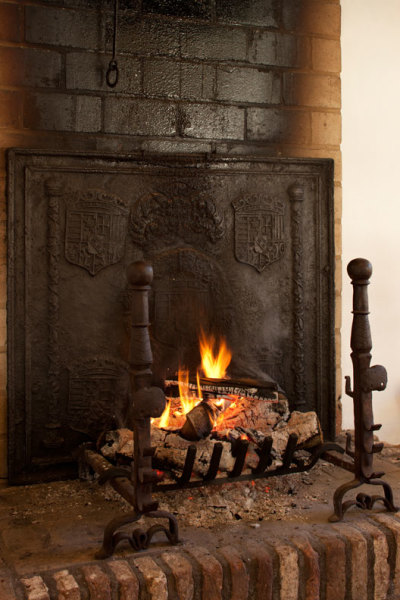
Adding a fireback to your hearth is a do—it helps increase the efficiency of the fireplace. (Photo: Charles Nijman)
1. Do inspect the concrete cap atop your chimney for defects. Even small cracks can funnel water, which will spall bricks and quickly cause structural damage to the entire chimney.
2. Do burn hardwoods like maple, ash, birch, and oak; they get hotter and produce less creosote than softwoods.
3. Do make sure your wood is seasoned (at least one year); it will burn better and leave less creosote residue.
4. Do choose a hefty fireback—the heavier it is, the longer it will radiate heat. “Firebacks increase the efficiency of an open fire by up to 50 percent,” says Charles Nijman, who deals in antique versions.
5. Do consider topping your chimney with a metal safety cap—it keeps animals out, and keeps rain off of the damper, which helps protect it from rust.
6. Don’t ignore cracked bricks inside the firebox—they also can pose a fire hazard, so have them replaced by a certified mason.
7. Don’t live with a cracked chimney liner. Liners need to be in perfect condition for safe operation. If your liner is cracked, replace it immediately.
8. Do have your chimney cleaned once a year—more often if it sees heavy use. This eliminates soot and creosote buildup, which can catch fire.
9. Don’t choose a modern insert that will overwhelm an old room. If your room is small, look for models that give off no more than 30,000 BTUs.
10. Don’t try to install an insert or stove yourself—always hire a professional.







